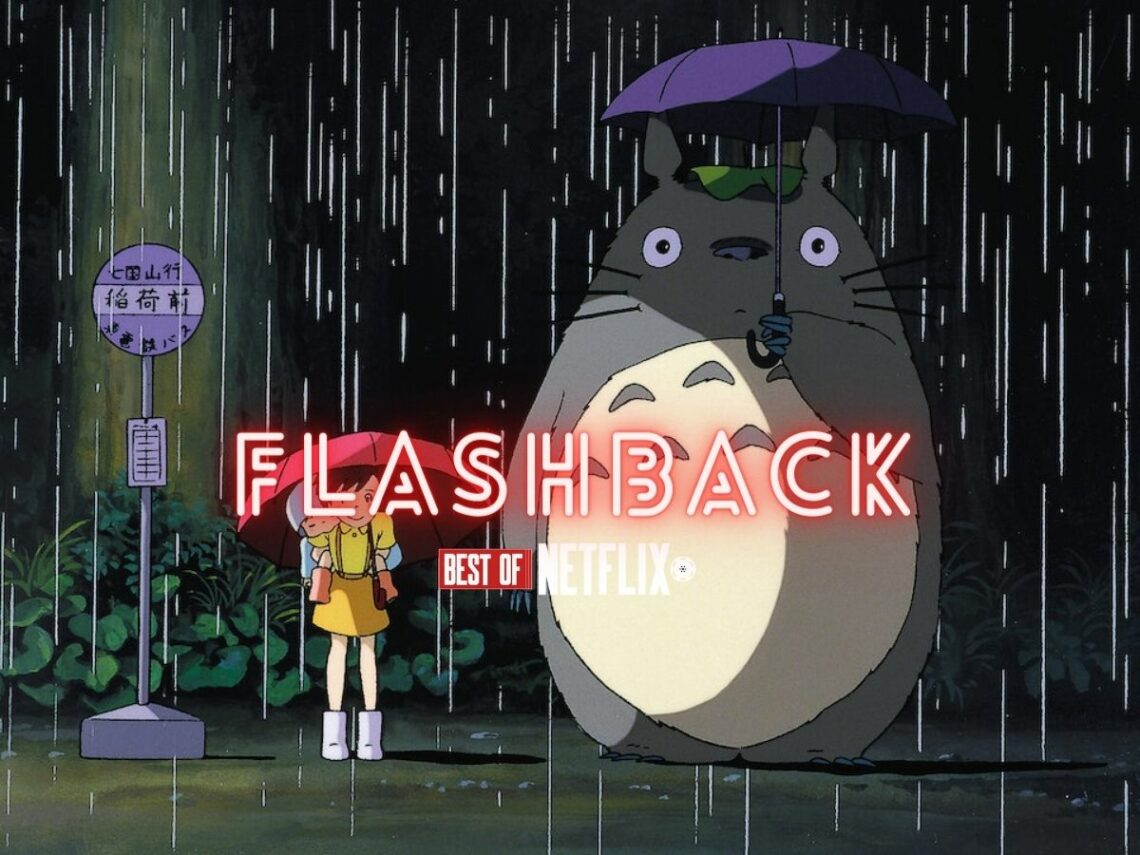Hayao Miyazaki’s My Neighbour Totoro is an enchanting exploration of childhood, magic, and animism, coded with Shinto symbology—from Torii gates to altars with offerings left out for kami, Shinto deities, who are manifestations of the sacred in the world around us.
With its otherworldly cinematography, uncluttered compositions, and wide-angle panning shots of the idyllic 1950s countryside of Japan, this Studio Ghibli film is easily the most soothingly beautiful.
My Neighbour Totoro stands as a timeless gem that is a visually stunning and emotionally touching cinematic experience.
Set in post-war rural Japan, My Neighbour Totoro revolves around two young sisters, Satsuki and Mei, who move to the countryside with their father, university professor Tatsuo Kusakabe, to be closer to their ailing mother, Yasuko, who has been hospitalised for a while. Like most kids their age, they have very little understanding of what ails their mother. All they want is for her to return home the soonest.
As Satsuki and Mei explore their new surroundings, they encounter a fantastical realm inhabited by dust-like house spirits called susuwatari (which were also seen in Spirited Away) as well as wondrous forest spirits, including our titular Totoro, who dwells in a giant camphor tree within a Shinto shrine adorned by a sacred Shinto rope.
The film’s heart lies in exploring the girls’ wonderment, resilience, and the unbreakable bond they share as siblings. Through their eyes, viewers are transported into a world where the lines between reality and imagination blur.
The stunning hand-drawn animation, picturesque landscapes, and visual depth transport viewers to the tranquil surroundings in the film. With its exquisite detail to light and shadow work and near-translucent paint strokes, My Neighbour Totoro also has elements of hedgecraft, which refers to journeying or travelling between the physical world and the spiritual realm, often represented metaphorically by a “hedge” or boundary. In this context, the term “hedge” symbolises the liminal space between worlds, making hedge magick a unique and mystical tradition within the broader realm of witchcraft and paganism.
Mei first stumbles through the hedges into the forest to find Totoro sleeping. But when Satsuki and Tatsuo come to find her, the spirits Mei has befriended are nowhere to be seen. The first time four-year-old Mei meets Totoro, she is unafraid and mesmerised.
Totoro eventually shows up in front of the somewhat more sceptical Satsuki when she waits at the bus stop for her father to return from work. This scene is as cosy as it is magical. The two sisters stand against tall trees and a dark forest under a solitary streetlight, with just one umbrella shielding them against the pitter-patter of raindrops. When Totoro appears, waiting for his Cat bus, he only has a giant leaf to hold over his head, so a scared but kind Satsuki offers him their extra umbrella. In return, Totoro gives them a bundle of seeds to show his gratitude.
The growing seeds scene we get later is one of the most magical sequences. Satsuki and Mei plant the seeds Totoro gifted them in their backyard, waiting for them to grow eagerly. Shortly after, the sisters awaken at midnight to discover Totoro and other spirits performing a ceremonial dance around the planted seeds. Enthralled, they join in, resulting in the seeds sprouting into a colossal tree. Totoro treats them to a magical ride on a flying top as we see Tatsuo working overtime and missing it all. When morning arrives, the tree vanishes, leaving behind flourishing sprouts.
It is a testament to Miyazaki’s storytelling witchery that My Neighbour Totoro remains an enduring classic that can heal even the most frayed soul.
My Neighbour Totoro is currently streaming on Netflix.
